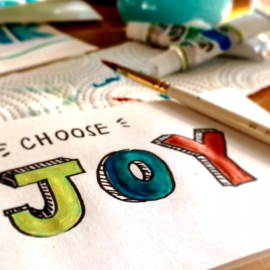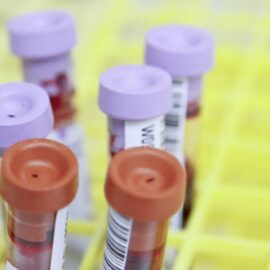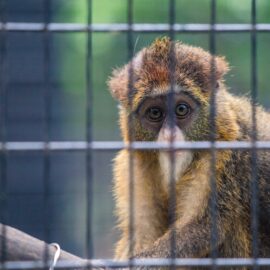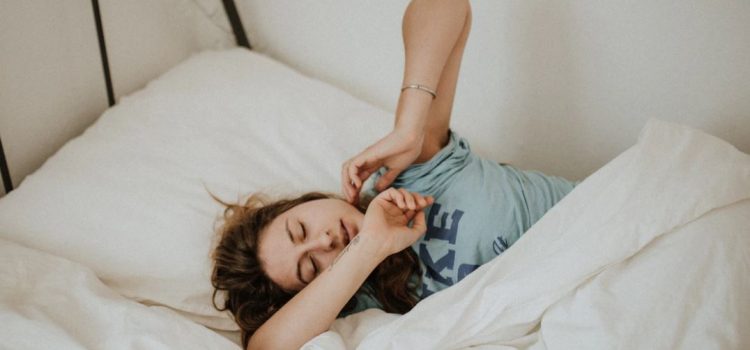
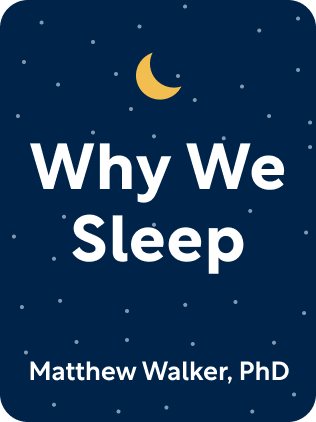
This article is an excerpt from the Shortform summary of "Why We Sleep" by Matthew Walker. Shortform has the world's best summaries of books you should be reading.
Like this article? Sign up for a free trial here .
What role does the circadian rhythm play in sleep? How does the circadian rhythm work with adenosine to regulate the sleep cycle?
The sleep cycle is made up of the circadian rhythm and a chemical called adenosine. The circadian rhythm keeps you up during the day, and adenosine puts you to sleep at night.
Learn how these two mechanisms work below.
How Sleep Rhythm Works
Your sleep cycle is regulated by two mechanisms: the natural circadian rhythm and adenosine.
Circadian Rhythm
The first mechanism, the circadian rhythm, is regulated by melatonin (produced by the suprachiasmatic nucleus in the brain). He describes this as a natural “wake drive,” making you stay awake during the day and waning during the night.
- The circadian rhythm responds to light and darkness to calibrate itself. It’s naturally 14 hours and 15 minutes long on average.
(Shortform note: In the first edition, Walker had written that “every living creature on the planet with a life span of more than several days” has a circadian rhythm. In his blog, researcher Alexey Guzey says that this is false—brewer’s yeast, which lives for more than 20 days, does not go through this cycle. He writes that some people may dismiss this point as minor, thinking that brewer’s yeast doesn’t count as an animal. However, he still thinks it’s crucial to mention this information because it counters Walker’s assertion that all living creatures have a circadian rhythm. Walker addresses this point in the second edition by changing the phrasing to “most living creatures on the planet” (emphasis ours). He also clarifies in his blog that there are exceptions to the seemingly universal phenomenon, mentioning mammals that don’t seem to have a circadian rhythm.)
Circadian rhythms vary from person to person, dictating when they naturally wake up and have maximum energy. Walker says that this proves that the idea of “morning people” and “night owls” is real.
- Whether you’re a morning or night person strongly depends on your genetics.
- Humans evolved with this variation because having a mixture of morning people and night owls allows a population to reduce its vulnerability. For example, as morning people go to sleep earlier (say at 10PM), night owls can keep up the watch. Then as night owls get tired (say around 4AM), the morning people are starting to wake.
- Walker argues that in modern times, the night owls are heavily punished, since early start times at work force night owls to sleep and wake up earlier than their bodies are optimized to. This reduces performance in the mornings. Furthermore, by the time night owls peak in the afternoon, the work day has already ended.
| Can a Night Owl Become a Morning Person? It’s very hard to change your chronotype (your biological propensity to sleep at particular hours), but given the way work and school schedules are currently structured, you might be looking to override your biology. Here are some tips to help night owls become morning larks: At Night Avoid blue light-emitting screens and engage in relaxing activities, like reading or meditating, a couple of hours before bedtime. Turn the lights down low to signal to your body that it’s nearing bedtime. Allow yourself to be bored—don’t do anything that excites you. Be patient. It takes at least a week for your body to adjust to the new schedule, so don’t expect immediate results and just keep at it. In the Morning Give yourself something to look forward to in the morning, like playing a video game for 20 minutes when you wake up instead of before going to bed. Adjust your wake-up time to half an hour earlier each week until you reach your target time. Get outside and allow the sunlight to hit your eyes. |
Adenosine
The second sleep-regulating mechanism, adenosine is a chemical that causes “sleep pressure,” or the increased desire to sleep. Walker explains that this rises consistently through the day without sleep, making you feel more tired. Sleeping depletes adenosine, which means you wake up with a decreased desire for sleep.
Sleep naturally happens when your adenosine is at its highest and your circadian “wake drive” is at its lowest. In the morning, your wake drive starts up again and your adenosine has been depleted by sleep—you feel awake because you’ve reduced the adenosine-circadian gap.
Walker says that this explains an odd phenomenon: Pulling an all-nighter and getting a second wind in the morning. Your adenosine keeps rising, so when your wake cycle dips at 3AM the gap is larger and you feel tired. But at 8AM, your wake cycle restarts and closes the gap and you feel more awake.
(Shortform note: It’s best to avoid pulling an all-nighter, but if you must, you can minimize the disruption to your sleep routine by keeping yourself awake until your next bedtime. Stay hydrated, and resist the urge to take a long nap—stay active, chew gum, or smell rosemary, peppermint, or coffee to help keep you up.)

———End of Preview———
Like what you just read? Read the rest of the world's best summary of Matthew Walker's "Why We Sleep" at Shortform .
Here's what you'll find in our full Why We Sleep summary :
- Why you need way more sleep than you're currently getting
- How your brain rejuvenates itself during sleep, and why nothing can substitute for sleep
- The 11-item checklist to get more restful sleep today

